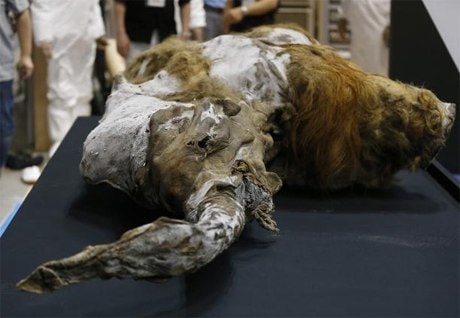39,000-year-old mammoth carcass on display
The public has the chance to see a rare woolly mammoth carcass in Japan after scientists transported it from Russia.
 |
|
A team of experts from Northeastern University in Russia and colleagues from the Korea Bioengineering Research Institute discovered the carcass of a juvenile female mammoth in the permafrost of Russia’s New Siberian Islands. The animal had eaten the upper half of its body, but the lower half was still frozen, allowing scientists to extract blood, soft tissue, and glands from the mammoth’s body.
Yuka, the 39,000-year-old mammoth, is on public display in Yokohama, Japan, after being transported from Siberia, the New York Daily News reported. Visitors can admire the golden-brown fur and soft tissue of the carcass and imagine it roaming glaciers thousands of years ago.
"We were really surprised to find mammoth blood and muscle tissue. This is the first time we have tried to take blood from them. No one has ever seen how mammoth blood flows before," Semyon Grigoriev, director of the Mammoth Museum at Northeastern University in Russia, said in June.
Grigoriev hopes he and his colleagues will find at least one cell from the elephant still alive. If that hope comes true, the team could revive the mammoth using cloning techniques.
“But in the harsh conditions of the permafrost, that possibility is very small,” he admitted.
Scientists believe that mammoths became extinct more than 10,000 years ago, but some elephants lived as late as 1,650 BC.
Last year, Russia's Northeastern University signed a cooperation agreement with the Korea Biotechnology Research Institute to clone mammoths from mammoth remains in Russia.
According to Vnexpress - VT






